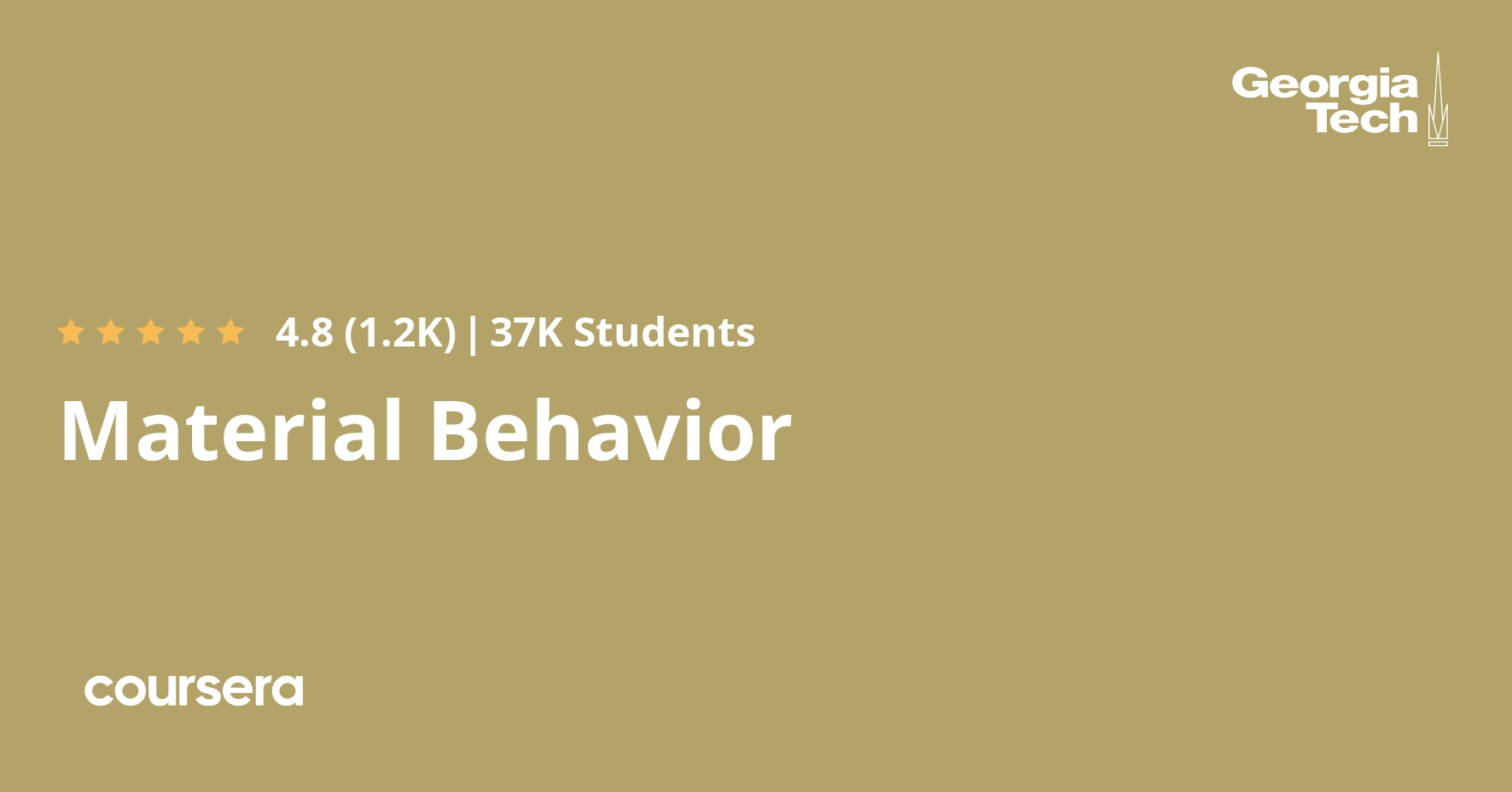Description
Have you ever wondered why ceramics are hard and brittle while metals tend to be ductile? Why some materials conduct heat or electricity while others are insulators? Why adding just a small amount of carbon to iron results in an alloy that is so much stronger than the base metal? In this course, you will learn how a material’s properties are determined by the microstructure of the material, which is in turn determined by composition and the processing that the material has undergone.
This is the first of three Coursera courses that mirror the Introduction to Materials Science class that is taken by most engineering undergrads at Georgia Tech. The aim of the course is to help students better understand the engineering materials that are used in the world around them. This first section covers the fundamentals of materials science including atomic structure and bonding, crystal structure, atomic and microscopic defects, and noncrystalline materials such as glasses, rubbers, and polymers.
What you will learn
Introduction [Difficulty: Easy || Student Effort: 1hr 30mins]
This module will introduce the core principles of materials science. Topics that will be covered include the different general material types (metal, ceramic, polymer, etc.) and the properties associated with each type, some methods that are used to experimentally determine and quantify a material’s properties, and how a materials engineer might go about choosing a suitable material for a simple application. This module also introduces the concept of the microstructure-processing-properties relationship which is at the heart of all materials science.
Atomic Structure and Bonding [Difficulty: Easy || Student Effort: 2hrs]
In this module, we will discuss the structure of the atom, how atoms interact with each other, and how those interactions affect material properties. We will explore how the types of atoms present in a material determine what kind of bonding occurs, what differentiates the three types of primary bonds – metallic, ionic, and covalent, and the implications of the type of bonding on the material microstructure. You will learn how atoms arrange themselves as a natural result of their size and bonding. This knowledge will provide you with a foundation for understanding the relationship between a material’s microstructure and its properties.
Crystalline Structure [Level of Difficulty: Medium || Student Effort: 2hrs 30mins]
This module covers how atoms are arranged in crystalline materials. Many of the materials that we deal with on a daily basis are crystalline, meaning that they are made up of a regularly repeating array of atoms. The “building block” of a crystal, which is called the Bravais lattice, dtermines some of the physical properties of a material. An understanding of these crystallographic principles will be vital to discussions of defects and diffusion, which are covered in the next module.
Point Defects and Diffusion [Level of Difficulty: Medium || Student Effort: 2hrs 30mins]
In the previous module, we learned how the lattice structure of a crystalline material in part determines the properties of that material. In this module, we will begin to learn how defects – deviations from the expected microstructure – also have a large effect on properties. This module covers one-dimensional, or point, defects which can be missing atoms (vacancies) or excess atoms (interstitial solution) or the wrong type of atom at a lattice point (substitutional solution). Building on these concepts, part of this module will cover diffusion – the movement of atoms through the crystal structure.





